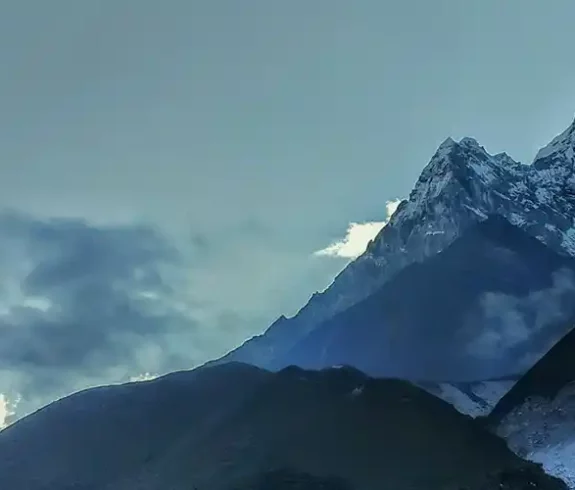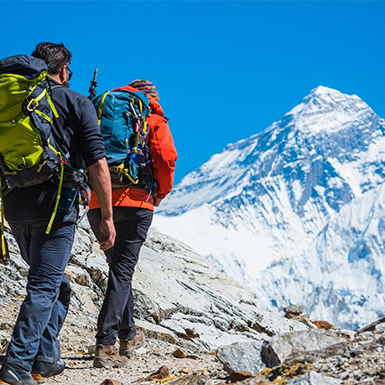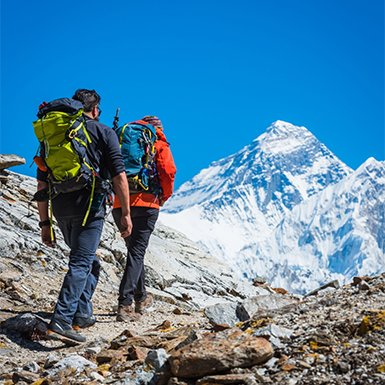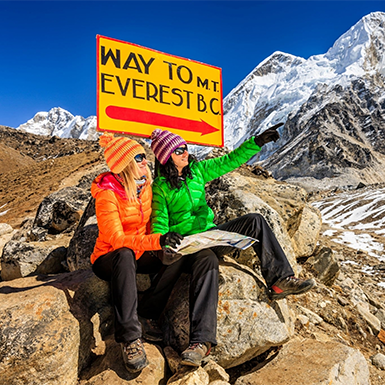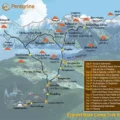Pangboche Nepal, nestled in the Khumbu region’s heart, emerges as a crucial hub for trekkers and cultural enthusiasts. This ancient village showcases the Himalayas’ stunning vistas and acts as a portal to deep cultural immersion into Sherpa life. The importance of Pangboche transcends its picturesque landscapes; it captures the spiritual and historical core vital to the area’s heritage.
Strategic Location on the Everest Base Camp Trekking Route
Pangboche’s strategic placement makes it an essential stop for those journeying toward Everest Base Camp. Explore how this village integrates into the more extensive trekking experience:
- Accessibility: Pangboche, located roughly a day’s trek from Namche Bazaar, offers a tranquil retreat from the route’s busier sections.
- Route Highlights: The trek from Tengboche to Pangboche unveils spectacular Ama Dablam views, setting a quintessentially Himalayan scene.
- Village Dynamics: Traditional Sherpa homes and monasteries welcome trekkers to Pangboche, showcasing a community deeply entrenched in Buddhist traditions.
- Altitude Acclimatization: Positioned at about 3,985 meters, Pangboche is an optimal location for trekkers to adjust to the altitude, readying themselves for the higher elevations ahead on their route to Everest Base Camp.
- Cultural Interaction: The village presents a distinct opportunity for trekkers to connect with local customs and discover Sherpa culture, enriching their trek.
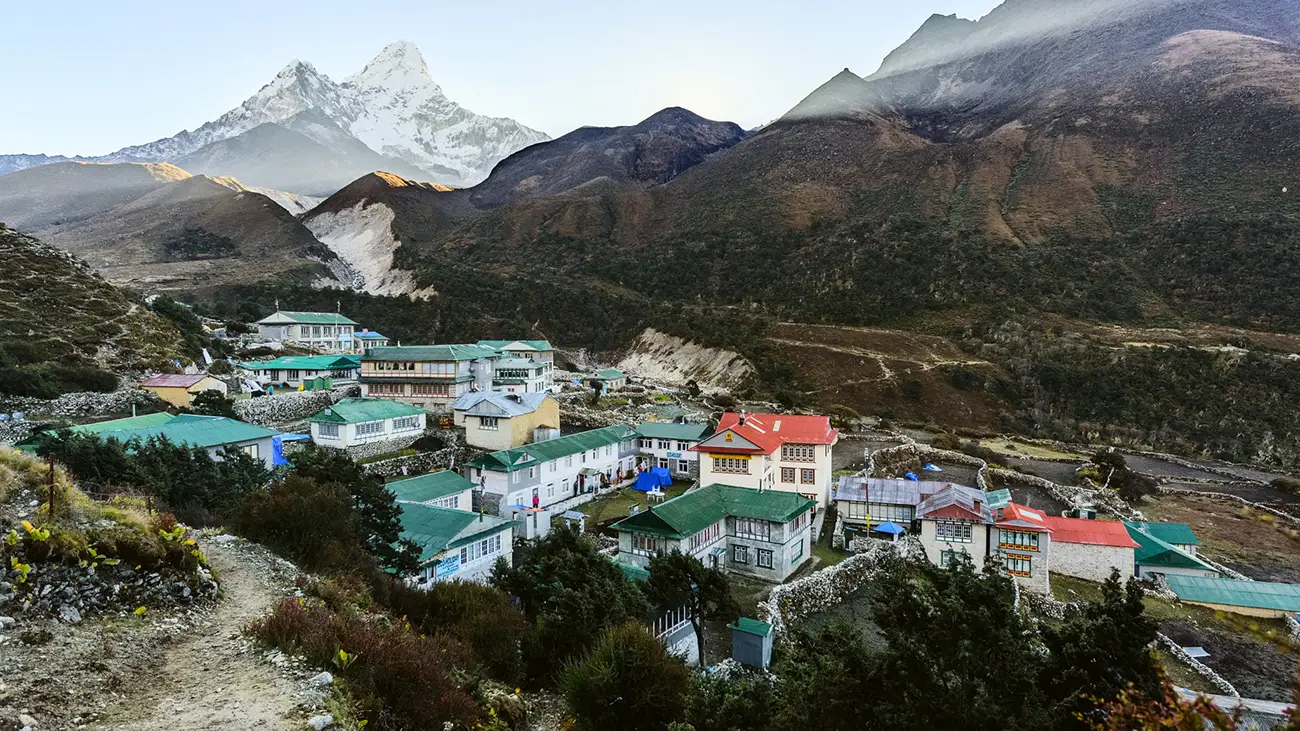
Historical and Cultural Significance of Pangboche Nepal
Pangboche Nepal is one of the oldest Sherpa settlements in the Khumbu region, deeply intertwined with the local history and spirituality. Beyond scenic views, this village acts as a living showcase of Sherpa culture and ancient traditions.
A Glimpse into Pangboche’s Past
The long-standing history of Pangboche showcases resilience and cultural preservation. Centuries ago, Sherpas established this area as their home, focusing on farming and raising livestock under the Himalayas’ towering peaks. The ancient structures and paths throughout the village tell stories of these early times, offering a unique insight into the ancestral Sherpa lifestyle.
- Preservation of Heritage: Throughout the decades, Pangboche’s inhabitants have preserved their traditional lifestyle, resisting the modernization that has transformed other regions.
- Architectural Insights: Stone houses and monasteries, enduring through time, dot the village landscape, displaying the distinctive Sherpa architectural style.
Cultural Heartbeat of Pangboche
Pangboche’s rich cultural tapestry significantly influences and nurtures the spiritual lives of its people.
- Pangboche Monastery: Situated at the cultural core, Pangboche Monastery, one of the area’s oldest, houses ancient relics and serves as a spiritual haven for the community. It hosts vibrant festivals and rituals that attract devotees and visitors worldwide.
- Festivals and Rituals: The monastery hosts numerous annual religious celebrations, which become a place of deep Buddhist expression and community joy.
Pangboche’s Role in Sherpa Traditions
Pangboche remains crucial to Sherpa traditions, serving as both a spiritual center and a cultural preservation site.
- Spiritual Practices: In Pangboche, daily life seamlessly integrates Buddhist practices. Prayer flags wave, and prayer wheels spin with every breeze, casting prayers for peace and prosperity.
- Cultural Transmission: Village elders impart stories and teachings to the young, ensuring their rich culture continues to thrive and resonate.
Exploring Pangboche Monastery
Pangboche Monastery, situated in the heart of this ancient Sherpa village, holds significant historical and spiritual importance. As one of the oldest religious sites in the Khumbu region, it attracts locals and trekkers who seek to connect with its rich heritage and sacred artifacts.
The Rich History and Significance of Pangboche Monastery
Since its founding by Lama Sanga Dorje in the early 16th century, this monastery has been a cornerstone of Sherpa’s spiritual practices. The monastery’s ancient structure, nestled beneath the towering peaks of the Himalayas, reflects the deep-rooted connection between the Sherpas and Tibetan Buddhism. For centuries, this monastery has served as a sanctuary for monks and pilgrims, offering them a place for worship, meditation, and learning.
- Tibetan Buddhism’s Role: The monastery is a cornerstone for promoting Tibetan Buddhist teachings. It has long provided the Sherpa community with a space for religious ceremonies, meditation, and the transmission of spiritual knowledge.
- Architectural Value: Designed in the traditional Tibetan style, the monastery features intricate woodwork, murals, and prayer wheels, symbolizing critical aspects of Buddhist beliefs.
Sacred Relics and Annual Celebrations
Pangboche Monastery houses several ancient relics of immense religious value. Blessed by prominent lamas, these relics continue to draw devotees from near and far.
- Relics of Reverence: Among the most revered artifacts is a skull believed to belong to Lama Sanga Dorje. A preserved hand and footprint, attributed to the same lama, are also displayed during special religious ceremonies, adding to the monastery’s spiritual allure.
- Annual Celebrations: The monastery becomes a vibrant activity center during religious yearly celebrations, including the Mani Rimdu festival. Marked by colorful masked dances, rituals, and prayers, these events unite the community, fostering unity and spiritual reflection.
Connections to Other Sacred Sites
Pangboche Monastery shares deep connections with other critical religious landmarks throughout the Khumbu region, forming a network of spiritual significance.
- Relationship with Tengboche Monastery: The monastery maintains a special connection with Tengboche Monastery, the area’s largest and most renowned religious site. Pilgrims and trekkers often visit both monasteries, following a spiritual path that links these sacred places.
- Part of the Spiritual Landscape: The monastery also connects with smaller gompas and chortens scattered throughout the Khumbu valley. Together, these sites create a spiritual landscape that guides and inspires those who traverse these paths.
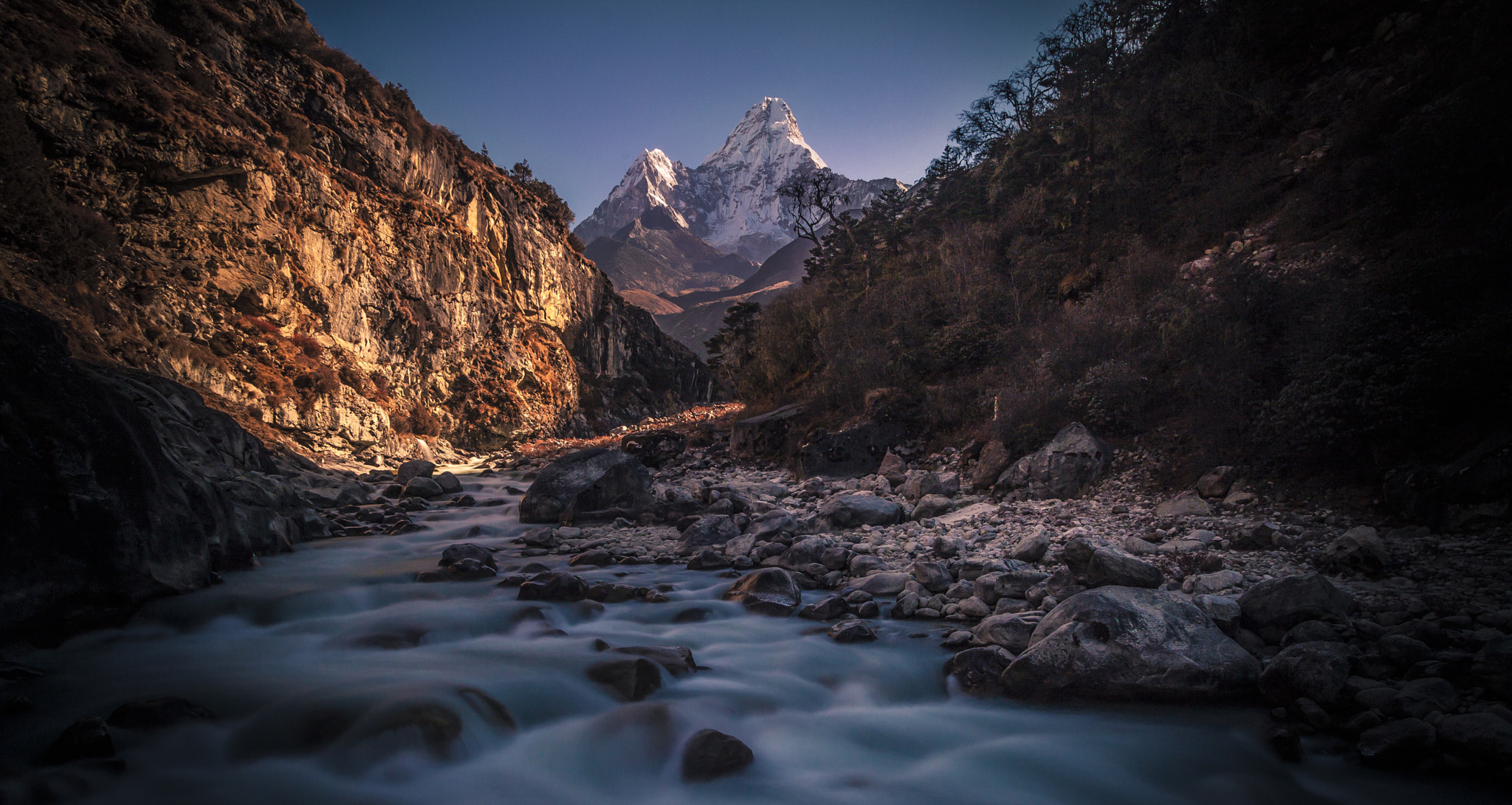
Trekking to Pangboche Nepal: Essential Routes, Tips, and Highlights
Exploring Pangboche Nepal blends stunning natural beauty and deep cultural insights uniquely. As a crucial waypoint en route to Everest Base Camp, knowing the best paths to this village and what to anticipate significantly enriches the trekking experience.
Accessing Pangboche
Several well-established trails lead to Pangboche, with the most popular routes starting from Namche Bazaar or Tengboche. These paths are integral to the trek towards the Everest region.
- Route from Namche Bazaar: A trek from Namche Bazaar to Pangboche typically spans 6-7 hours. This path winds through lush rhododendron forests alongside the Dudh Kosi River, showcasing the Khumbu region’s diverse landscapes.
- Route from Tengboche: This shorter trek, taking about 2-3 hours, features stunning views of Mount Everest and Ama Dablam. The path meanders through vibrant forests and tranquil mountain scenery, making it a visually rewarding trek.
Tips for Trekking to Pangboche
A safe and enjoyable Pangboche trek hinges on adequate preparation and understanding of your physical condition. Here are some vital tips:
- Optimal Trekking Months: April to May and October to November are the best times to trek to Pangboche. The weather typically remains clear during these months, providing excellent visibility and more comfortable temperatures.
- Terrain and Expectations: The trek involves various terrains with moderate climbs and descents. Proper acclimatization is essential, especially after ascending beyond Tengboche.
- Trek Duration and Difficulty: The trek from Namche Bazaar or Tengboche can vary depending on your pace and acclimatization stops. The trek is generally moderate and suitable for those with adequate fitness.
Pangboche’s Role as a Strategic Stopover
Pangboche offers a place to rest and is a cultural hub for trekkers headed to Everest Base Camp or other high mountain passes.
- Acclimatization Site: Positioned at approximately 3,985 meters, Pangboche provides an excellent location for trekkers to adjust to the high altitude before continuing to even higher elevations.
- Cultural Immersion: A stop in Pangboche allows trekkers to engage deeply with Sherpa culture. Visits to the Pangboche Monastery and interactions with the local community enrich the trekking experience.
- Viewpoints: The village boasts unparalleled views of the Himalayan peaks, offering a peaceful setting to relax and recharge.

Understanding Pangboche Altitude and Its Effects on Trekkers
Pangboche Nepal, perched at an impressive altitude of around 3,985 meters (13,074 feet), poses specific challenges and offers unique experiences for trekkers. Understanding how this elevation impacts the body and the necessary precautions are essential for anyone visiting or trekking in this area.
Effects of High Altitude in Pangboche
Pangboche’s high altitude can significantly impact trekkers, particularly those unfamiliar with such environments. Here are the key considerations:
- Lower Oxygen Levels: At its altitude of nearly 4,000 meters, Pangboche has much lower oxygen levels than sea level, which can potentially lead to altitude sickness without proper acclimatization.
- Symptoms of Altitude Sickness: Common symptoms include headaches, nausea, dizziness, and fatigue, which can hinder a trekker’s ability to walk and engage in physical activities.
Tips for Acclimatizing in Pangboche
Adequate acclimatization is crucial for a positive experience in Pangboche, avoiding the harmful effects of high altitude. Consider these tips:
- Gradual Climbing: Take your time ascending to acclimatize properly. Avoid direct flights or drives to high-altitude points.
- Stay Hydrated: The dry air and physical exertion at this altitude can quickly lead to dehydration. Drinking plenty of fluids is vital.
- Focus on Diet: Consuming carbohydrate-rich foods can provide the necessary energy and assist your body in adjusting to altitude changes.
- Rest Well: Adequate rest and sleep are essential, as your body acclimatizes more effectively during rest periods.
Health Precautions for Visitors to Pangboche
Implementing specific health precautions can significantly reduce the risks associated with Pangboche’s high altitude:
- Schedule Acclimatization Days: Add acclimatization stops in your trekking plan, staying at the same altitude for a few days at each new elevation milestone.
- Consider Medication: If you are susceptible to altitude sickness, discuss preventive medications like Acetazolamide (Diamox) with a healthcare provider.
- Monitor Your Symptoms: Monitor your body’s reaction to the altitude. If altitude sickness symptoms occur, descend and seek medical help.
- Avoid Alcohol and Tobacco: Both alcohol and smoking can worsen altitude sickness symptoms and interfere with the acclimatization process.
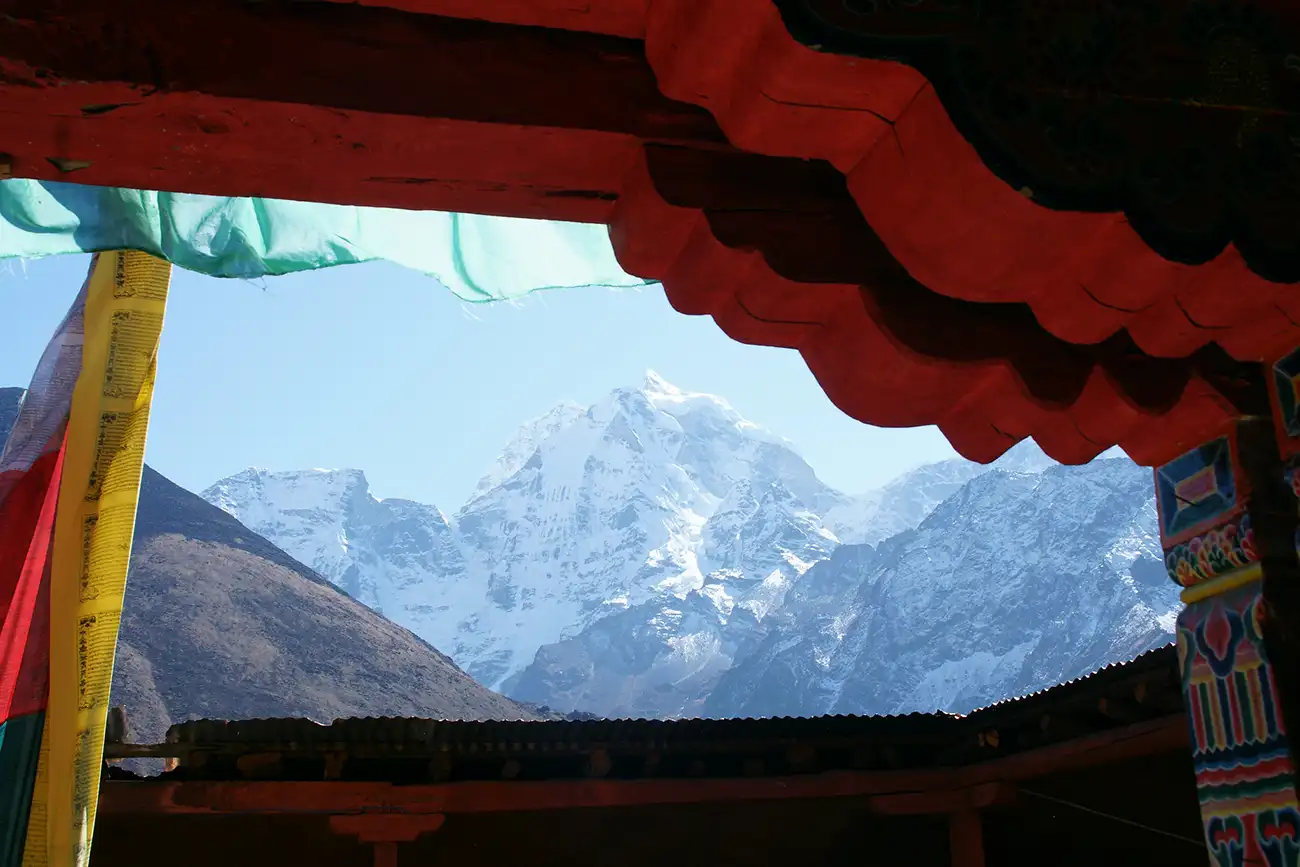
Understanding Pangboche Weather: A Guide for Trekkers
Pangboche Nepal offers breathtaking views and a unique cultural experience, but the weather in this high-altitude village can vary significantly throughout the year. Knowing what to expect and how to prepare for the weather conditions in Pangboche is essential for a safe and enjoyable trek.
Overview of Pangboche Weather
The high altitude of approximately 3,985 meters (13,074 feet) heavily influences Pangboche’s weather. The village experiences cold temperatures year-round, with significant seasonal variations:
- Spring (March to May): Spring is one of the best times to visit Pangboche. Expect temperatures ranging from -6°C to 10°C during this period. Enjoy mild weather and clear skies, perfect for admiring the surrounding peaks. Rhododendron flowers bloom during this season, adding vibrant colors to the landscape.
- Summer (June to August): Summer brings the monsoon season, with frequent rain showers and cloudy skies. Temperatures range from -3°C to 15°C (27°F to 59°F). Trekking can be challenging due to muddy and slippery trails. Heavy cloud cover can also reduce visibility.
- Autumn (September to November): Autumn is another ideal time for trekking. The weather is cool and stable, with temperatures ranging from -7°C to 8°C (19°F to 46°F). Clear skies provide excellent visibility, making the post-monsoon landscape lush and green.
- Winter (December to February): Winter in Pangboche is harsh, with temperatures often dropping below -15°C (5°F) at night. Snowfall is common, and the trails can be icy and difficult to navigate. However, for well-prepared people, winter offers a serene and less crowded trekking experience.
Best Times to Visit Pangboche
Choosing the right time to visit Pangboche depends on your trekking goals and weather preferences:
- Spring (March to May): This season is ideal for those seeking mild weather, blooming flowers, and clear views. It is also perfect for photography and enjoying the region’s natural beauty.
- Autumn (September to November) offers the best trekking conditions, with cool temperatures and clear skies. This period is popular among trekkers due to the stable weather and stunning views of the mountains.
What to Pack and Wear in Pangboche
Packing appropriately for Pangboche weather ensures comfort and safety during your trek. Here’s what to bring based on the season:
- Clothing Layers: Regardless of the season, layering is essential in the Pangboche layer with moisture-wicking base layers, insulating mid-layers, and a waterproof, windproof outer shell.
- Warm Accessories: Pack a hat, gloves, and thermal socks to keep warm, especially during the colder months. A neck gaiter or scarf can also protect against the chilly wind.
- Footwear: Invest in robust, waterproof trekking boots with ample ankle support. Consider bringing gaiters to keep snow and mud out of your shoes during the winter and monsoon seasons.
- Rain Gear: Lightweight rain gear is essential for summer showers. A waterproof cover for your backpack will also protect your gear from the rain.
- Sun Protection: The high altitude means stronger UV rays, so pack sunscreen, sunglasses, and a wide-brimmed hat to protect yourself from the sun.
Exploring Local Life, Community, and Amenities in Pangboche Nepal
Pangboche Nepal offers much more than a mere stopover on the trekking route to Everest Base Camp. It provides a rich cultural experience and a glimpse into the daily life of the local Sherpa community. Additionally, Pangboche offers a variety of accommodations and amenities that cater to trekkers and visitors.
Local Life and Community in Pangboche
Pangboche is home to a vibrant Sherpa community whose daily lives reflect a deep connection to their traditions and the natural environment.
- Daily Life in Pangboche: The residents of Pangboche lead a lifestyle deeply rooted in their cultural and religious beliefs. The Sherpa people are known for their warmth and hospitality, often welcoming trekkers into their homes for tea or a meal. Their day-to-day activities include tending to livestock, farming, and participating in community rituals at the Pangboche Monastery.
- Traditional Sherpa Homes: In Pangboche, Sherpa people typically construct their homes from local materials such as stone and wood. They design these homes to withstand harsh weather conditions at high altitudes. These houses often center around a hearth, which provides heat and a cooking area.
- Agriculture and Local Crafts: Agriculture plays a significant role in the local economy, with residents growing potatoes, barley, and vegetables in terraced fields. The community also practices traditional crafts, such as weaving and wood carving, often sold to tourists as souvenirs.
The Role of Tourism in Pangboche’s Economy
Tourism has become a vital part of the economy in Pangboche, providing income and employment opportunities for the local population.
- Economic Impact: The influx of trekkers and climbers to Pangboche has led to the growth of various businesses, including teahouses, lodges, and shops selling trekking gear and local crafts. Many residents work as guides, porters, or lodge owners, contributing to the village’s economic stability.
- Community-Led Conservation Efforts: The community in Pangboche has also taken steps to preserve its environment and culture. Some initiatives include maintaining clean trekking routes, promoting sustainable tourism practices, and participating in reforestation projects to protect the local ecosystem.
Accommodation and Amenities in Pangboche
Pangboche offers a range of accommodations and amenities designed to meet the needs of trekkers and visitors, making it a comfortable and convenient stop on the way to Everest Base Camp.
- Types of Accommodation: Visitors to Pangboche can choose various accommodation options, from simple teahouses to more comfortable lodges. Teahouses provide basic amenities like a bed and shared bathroom facilities, while lodges may offer private rooms, hot showers, and more extensive services.
- Dining Options: Trekkers can enjoy traditional Sherpa cuisine at the local teahouses and lodges. Meals often include dishes like dal bhat (rice and lentils), momo (dumplings), and thukpa (noodle soup). These hearty meals provide the necessary energy for trekking in high-altitude conditions.
- Availability of Amenities: Despite its remote location, Pangboche offers several modern amenities for visitors. Many teahouses and lodges provide internet access and charging stations for electronic devices, although these services may come at an additional cost. Basic medical facilities are also available, with some teahouses keeping first aid supplies on hand for trekkers who need assistance.
Nearby Attractions and Trek Extensions
Pangboche, Nepal, is a gateway to many spectacular sights and experiences in the Everest region. While it’s renowned as an essential stop on the route to Everest Base Camp, the village also provides access to other significant nearby attractions and opportunities for trek extensions that enhance the adventure.
Discover Nearby Attractions
From Pangboche, trekkers can easily explore several breathtaking sites that are worth the detour:
- Ama Dablam Base Camp: Just a day’s trek from Pangboche, Ama Dablam Base Camp offers stunning views of one of the most beautiful mountains in the Himalayas. The camp is less frequented than Everest Base Camp, providing a quieter, more secluded experience.
- Exploring Local Culture: While the natural landscape captivates many, the area’s rich cultural heritage also deserves attention. Visiting the ancient monasteries and interacting with the local Sherpa community in nearby villages enriches one’s understanding of the region’s history and traditions.
Extend Your Trek
For those looking to extend their adventure beyond Pangboche, there are several compelling options:
- Trek to Dingboche: A few hours’ trek from Pangboche, Dingboche offers another perfect spot for acclimatization. Additional trekking routes lead to Imja Tse, also known as Island Peak. This village provides a different perspective of the Himalayas, surrounded by stunning peaks.
- Visit Tengboche: On the route towards Everest Base Camp, stopping at Tengboche is a must. Home to the largest gompa (monastery) in the Khumbu region, Tengboche Monastery, this village offers spiritual insights and panoramic views, including Everest, Lhotse, and Ama Dablam.
Practical Tips for Exploring Nearby Attractions
When planning extensions or visits to nearby attractions from Pangboche, consider these tips to enhance your experience:
- Check Weather Conditions: Monitoring weather forecasts is crucial when visiting high-altitude sites like Ama Dablam Base Camp. Pangboche weather can change rapidly, influencing trekking conditions and visibility.
- Acclimatize Appropriately: If you extend your trek to higher altitudes, additional acclimatization days in places like Dingboche can help you adjust to the elevation and reduce the risk of altitude sickness.
- Hire Local Guides: Engaging a local guide not only supports the community but also enriches your trek with expert knowledge of the trails, local flora and fauna, and cultural nuances that you might otherwise miss.
Conclusion: Why Pangboche Nepal Should Be on Your Trekking Itinerary
Pangboche Nepal combines breathtaking natural beauty, a rich cultural heritage, and profound spiritual significance. Nestled at a high altitude, the village of Pangboche is more than just a stopover on the way to Everest Base Camp. It’s a place where the awe-inspiring Himalayan landscape meets centuries-old Sherpa traditions.
- Natural Beauty: Stunning mountain views, including the majestic Ama Dablam, surround Pangboche. The area offers unique trekking opportunities, such as the nearby Ama Dablam Base Camp, which provides a quieter and more secluded experience compared to the more crowded Everest Base Camp.
- Cultural Heritage: The village boasts the historic Pangboche Monastery, an ancient site where visitors can experience Sherpa spirituality. The monastery, along with traditional Sherpa homes, agricultural practices, and local crafts, offers a deep dive into the unique cultural landscape of the Khumbu region.
- Spiritual Significance: Pangboche’s ambiance is palpable, and its monastery serves as a center for Buddhist worship and cultural activities. The tranquil village environment, combined with the warm hospitality of the Sherpa community, makes it a place of reflection and rejuvenation.
